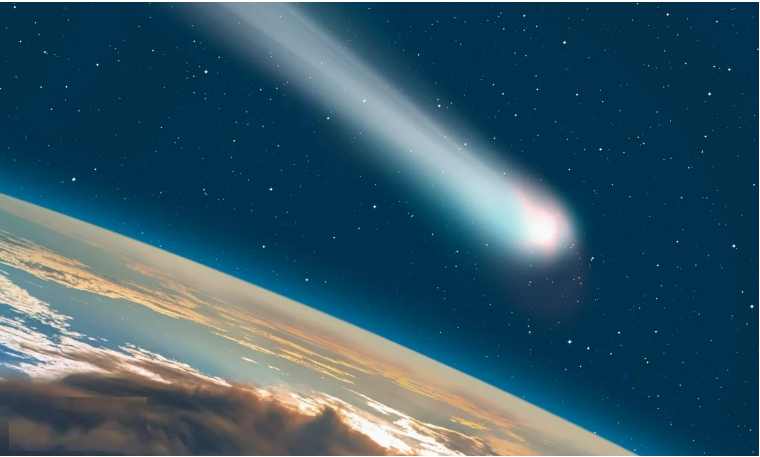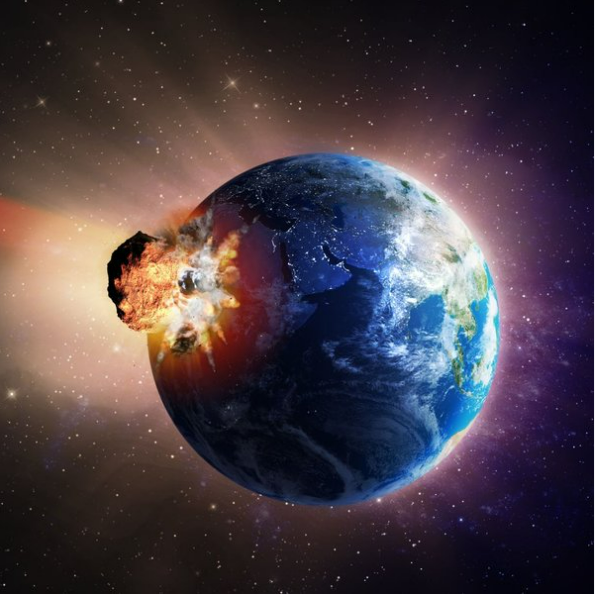“A colossal comet, dwarfing Mount Everest, is approaching Earth.”
In a world where scientists and astronomers continuously enlighten us with fresh insights into the universe, the scientific community has now unveiled another awe-inspiring revelation that has ignited both curiosity and some anxiety.
A massive comet, adorned with imposing horns, far surpassing even the majestic Mount Everest in grandeur, has shattered into foreboding fragments hurtling towards our Earth.

Known to scientists as 12P/Pons-Brooks, the comet last made an appearance in Earth’s skies more than 70 years ago. Judging by its brightness, astronomers have estimated that the solid part of the comet, or its nucleus, is about 12.4 miles across — roughly twice the size of Mount Everest.2 days agoKnown to scientists as 12P/Pons-Brooks, the comet last made an appearance in Earth’s skies more than 70 years ago. Judging by its brightness, astronomers have estimated that the solid part of the comet, or its nucleus, is about 12.4 miles across — roughly twice the size of Mount Everest.
In a realm where scientists and astronomers continuously enrich our understanding of the cosmos, a recent revelation has both fascinated and instilled a sense of unease in the scientific community. An enormous comet adorned with horns, surpassing even the majestic stature of Mount Everest, has fractured into foreboding pieces hurtling in the direction of our world.
The vigilant British Astronomical Association, which perpetually monitors the enigmatic comet 12P, observed a substantial increase in its luminosity, attributed to the reflection of light off the surrounding gas cloud enveloping its core.”
s reported by Live Science, the origin of this cosmic spectacle can be traced back to the cryovolcanic comet 12P/Pons-Brooks, boasting a diameter of 18.6 miles, comparable to the size of a modest urban city.
While the comet’s immense size and its eerie trajectory might induce a sense of unease, there is presently no immediate cause for alarm akin to a “Deep Impact.” Fortunately, this celestial wanderer, which follows a 71-year orbit around the sun, will not approach Earth until 2024. At that time, it will become visible without the need for sophisticated optical equipment.
Teddy Kareta, a postdoctoral researcher at Lowell Observatory in Flagstaff, Arizona, shared with Insider, “We know it’s substantial. We know it’s an anomaly. We know it’s rare.” He stressed that, despite its remarkable brightness, it will maintain a significant distance from our planet, hovering at approximately one-and-a-half astronomical units away. This luminosity will not be due to its proximity but rather the inherent radiance of the comet itself, potentially making it visible to the naked eye or through binoculars.
The enigmatic “horns” adorning the comet’s structure result from the ejection of gas and dust tails during a series of inexplicable explosive events that continue to baffle scientists. This year has witnessed two such eruptions, with the first occurring in July and the most recent just recently.

As reported by Live Science, the origin of this cosmic spectacle can be traced back to the cryovolcanic comet 12P/Pons-Brooks, boasting a diameter of 18.6 miles, comparable to the size of a modest urban city.
While the comet’s immense size and its eerie trajectory might induce a sense of unease, there is presently no immediate cause for alarm akin to a “Deep Impact.” Fortunately, this celestial wanderer, which follows a 71-year orbit around the sun, will not approach Earth until 2024. At that time, it will become visible without the need for sophisticated optical equipment.
Teddy Kareta, a postdoctoral researcher at Lowell Observatory in Flagstaff, Arizona, shared with Insider, “We know it’s substantial. We know it’s an anomaly. We know it’s rare.” He stressed that, despite its remarkable brightness, it will maintain a significant distance from our planet, hovering at approximately one-and-a-half astronomical units away. This luminosity will not be due to its proximity but rather the inherent radiance of the comet itself, potentially making it visible to the naked eye or through binoculars.
The enigmatic “horns” adorning the comet’s structure result from the ejection of gas and dust tails during a series of inexplicable explosive events that continue to baffle scientists. This year has witnessed two such eruptions, with the first occurring in July and the most recent just recently.
